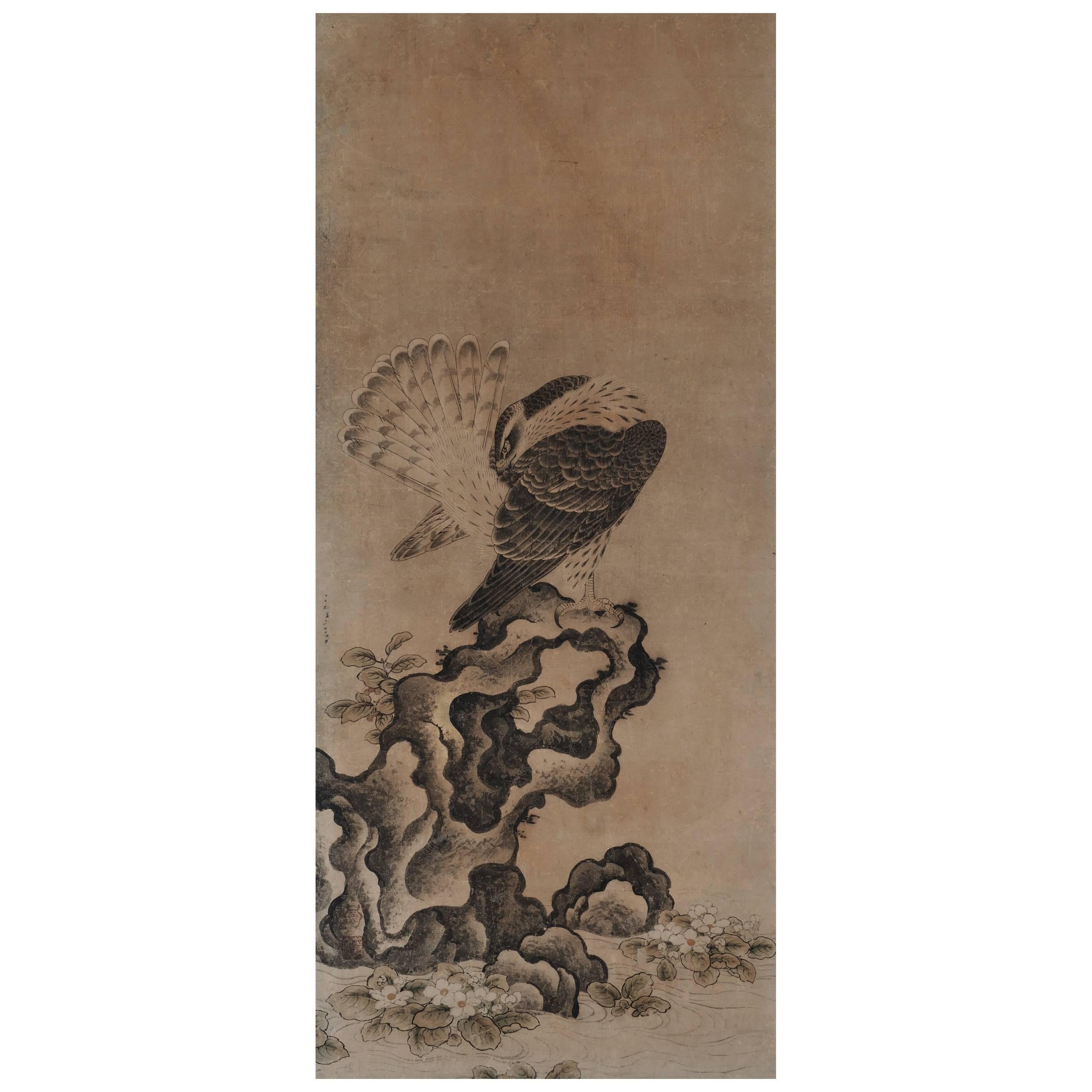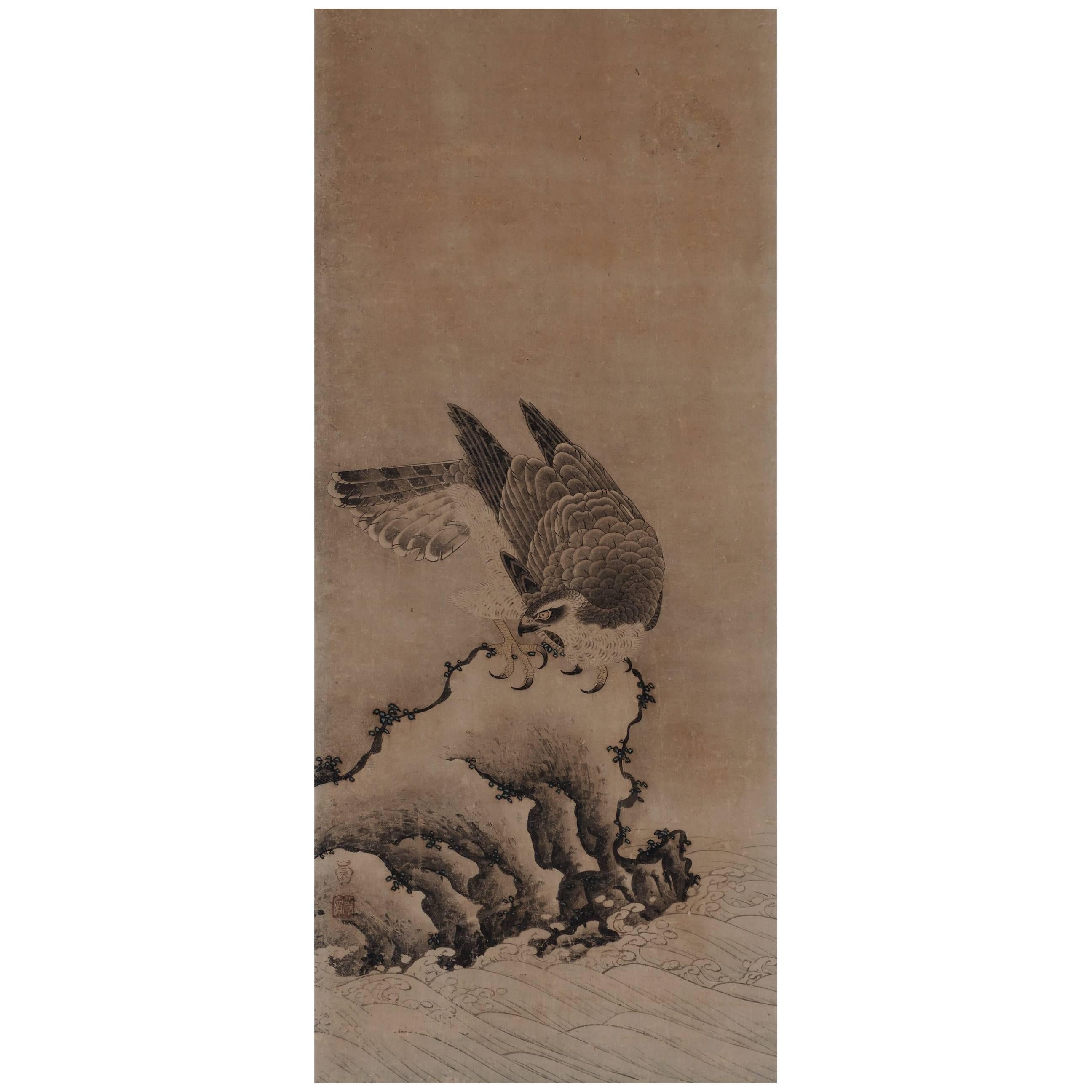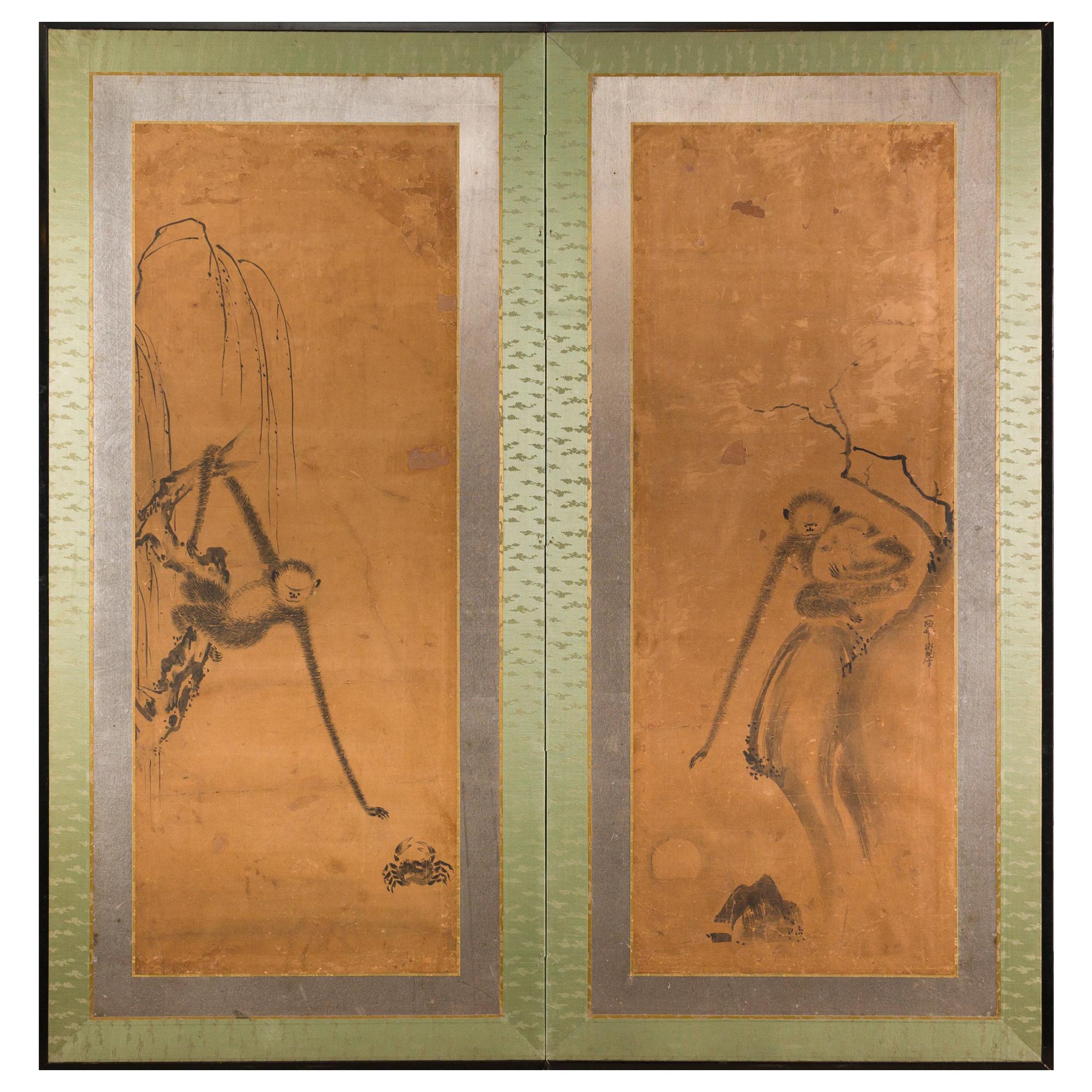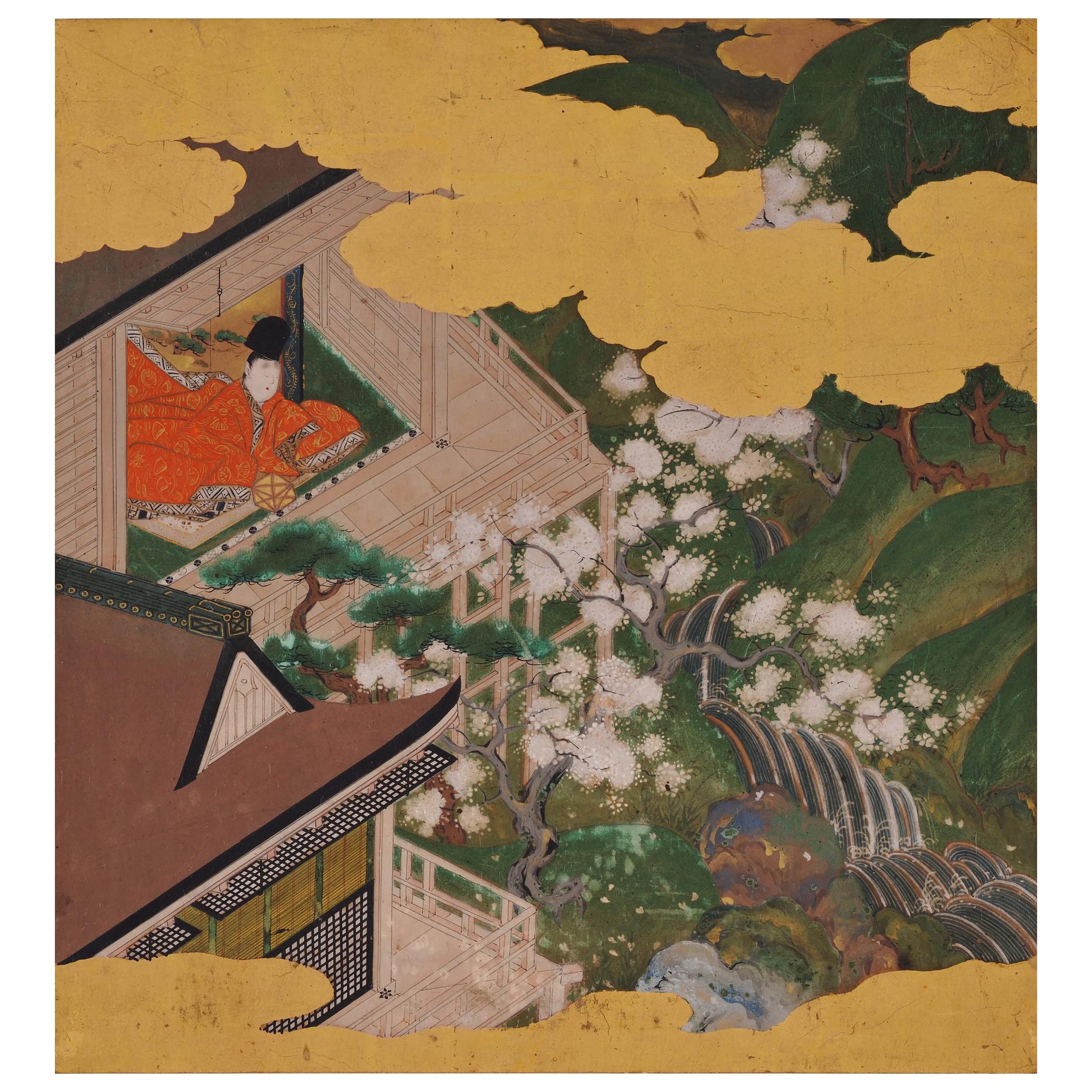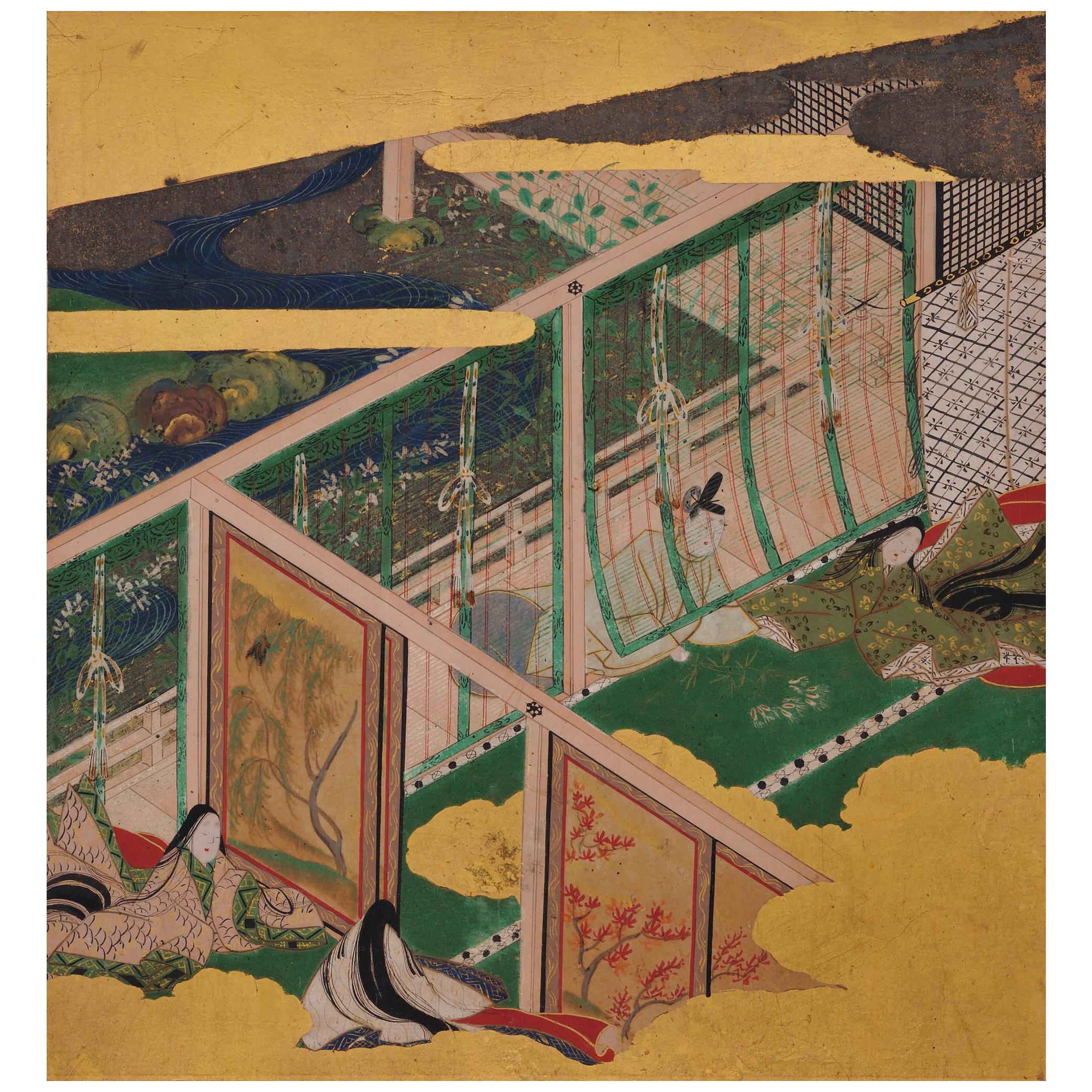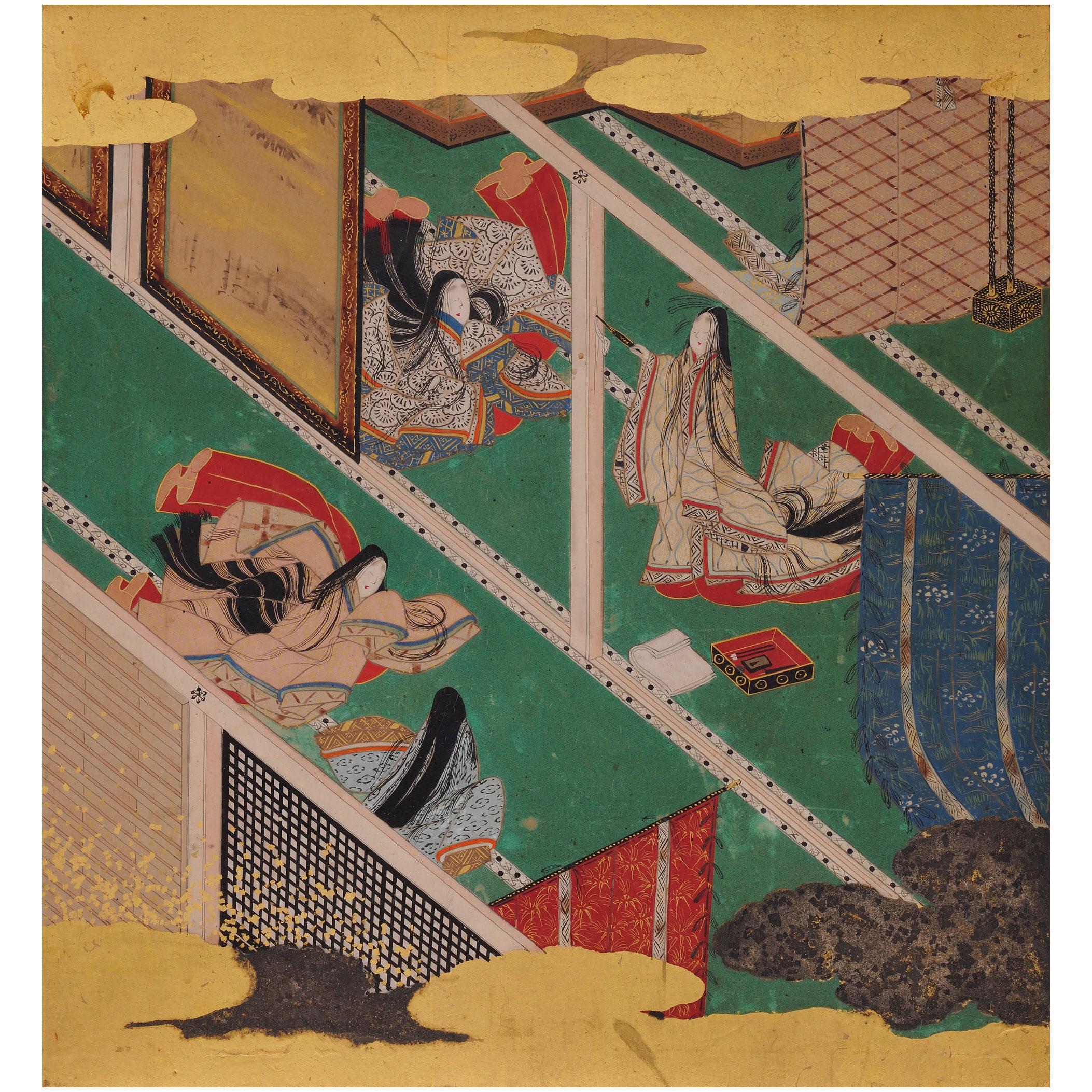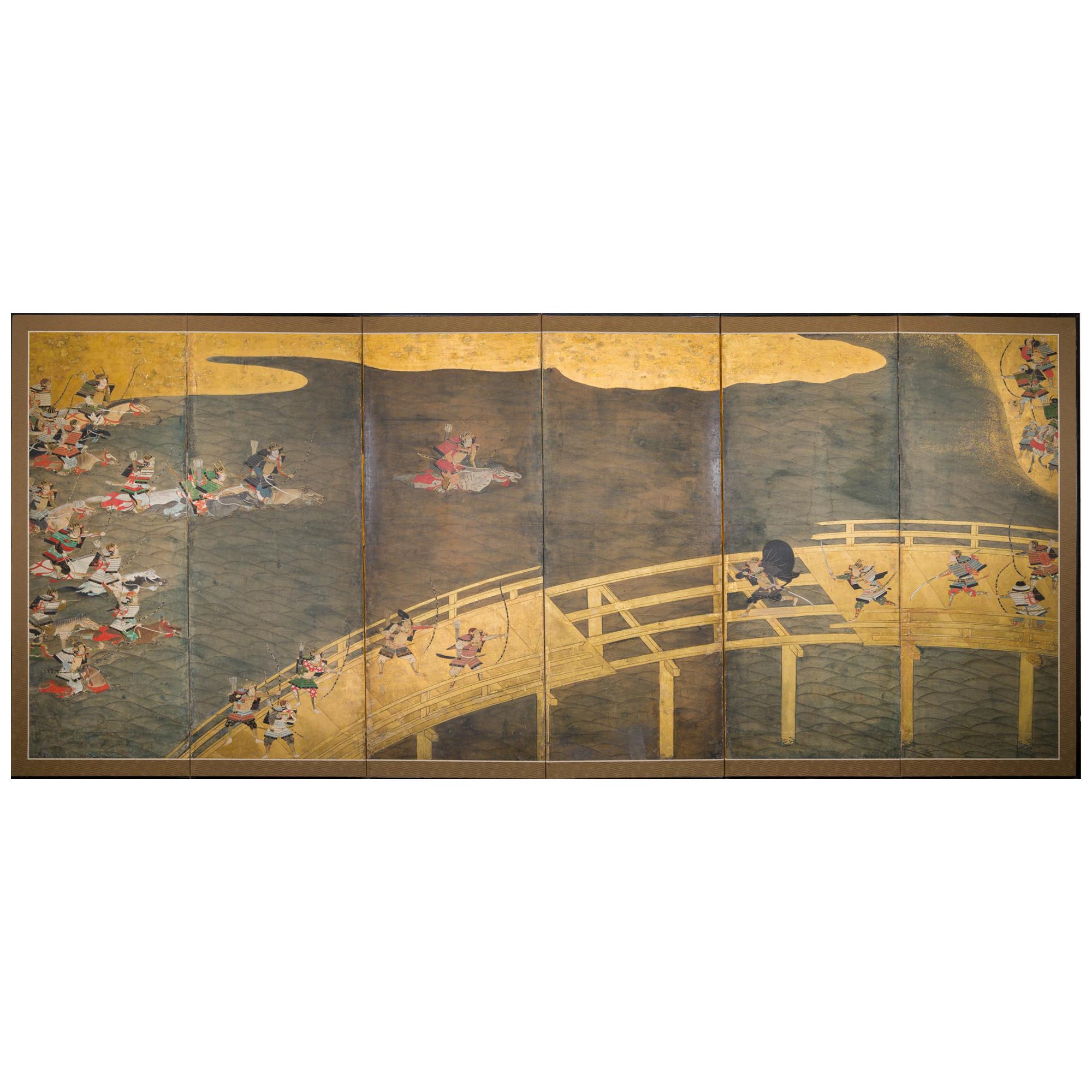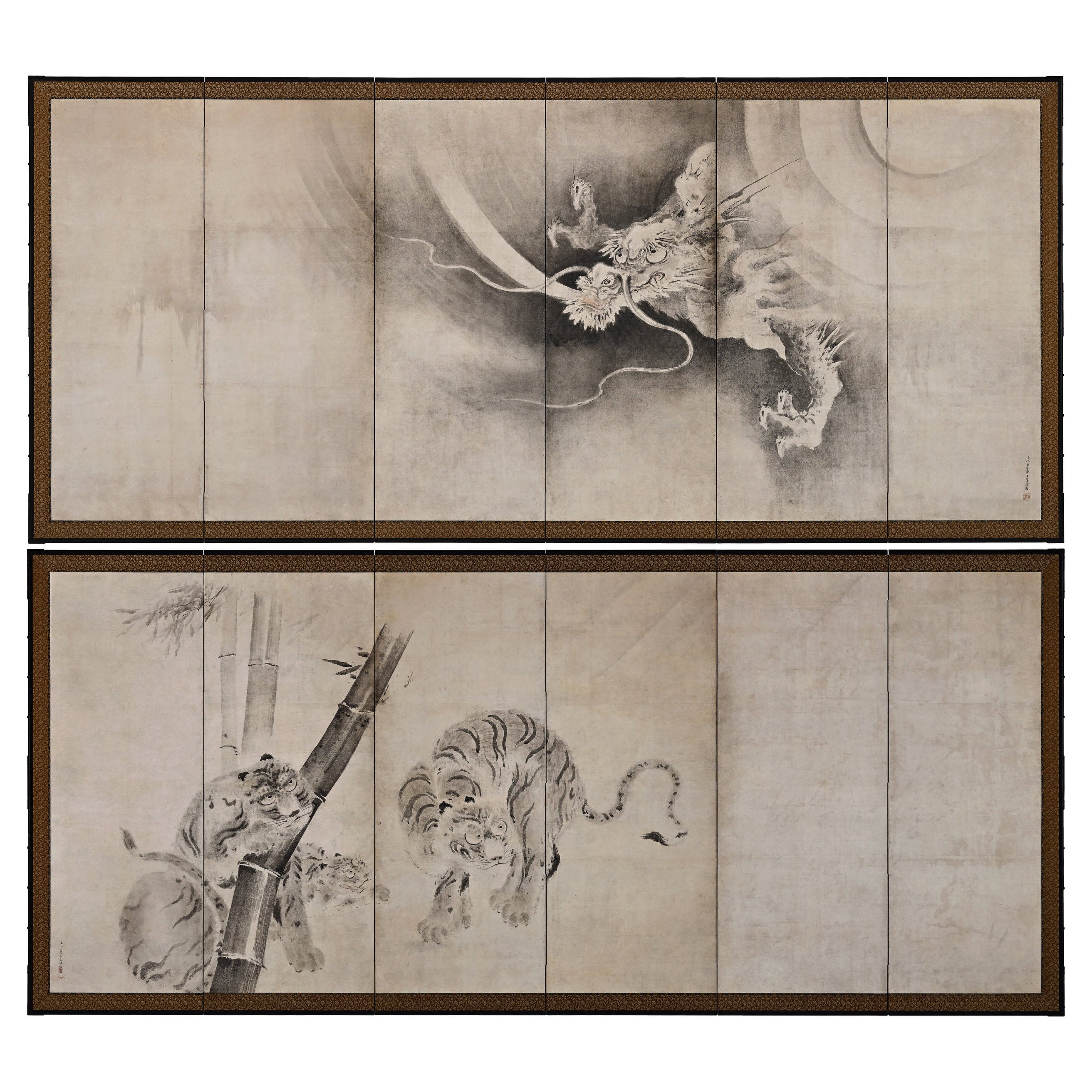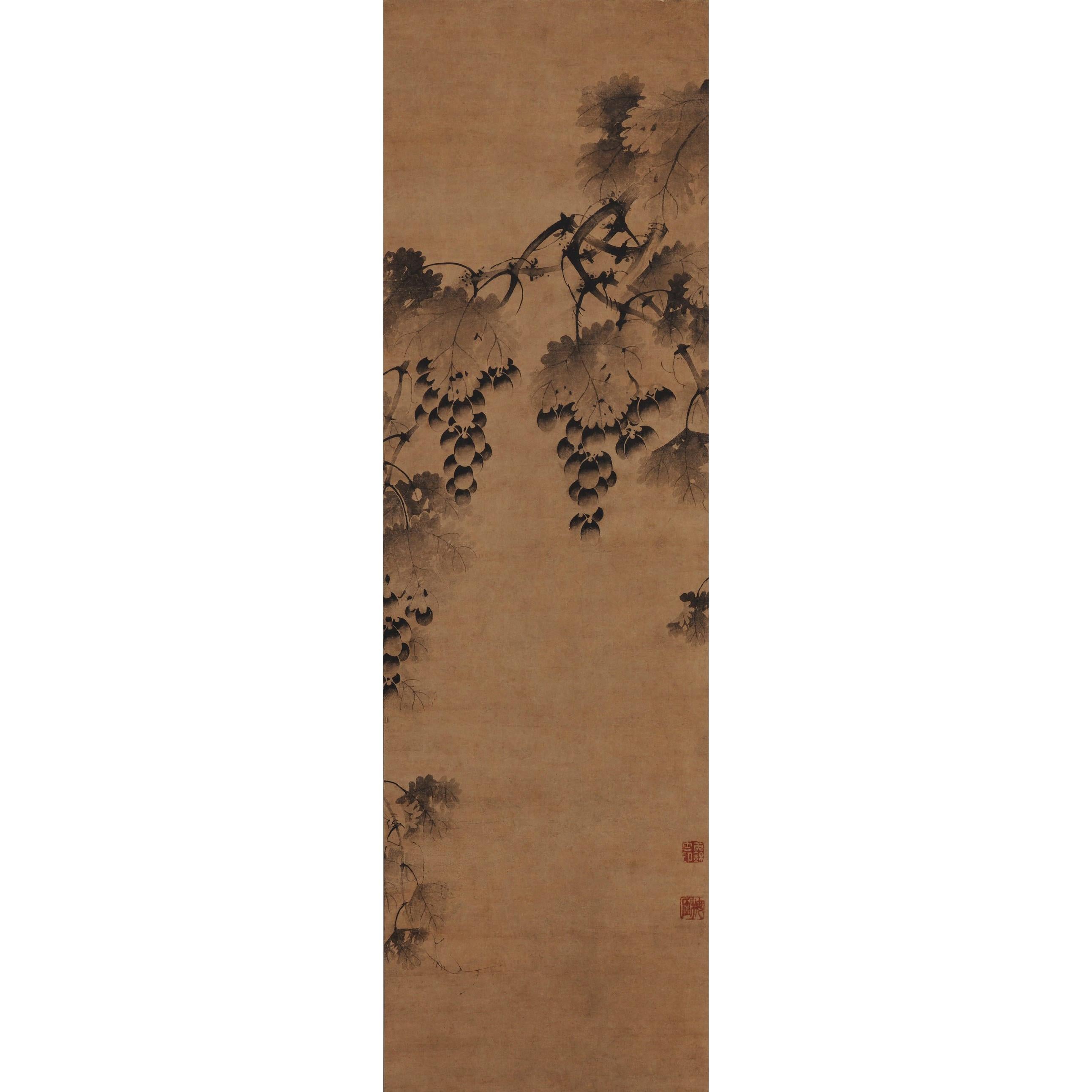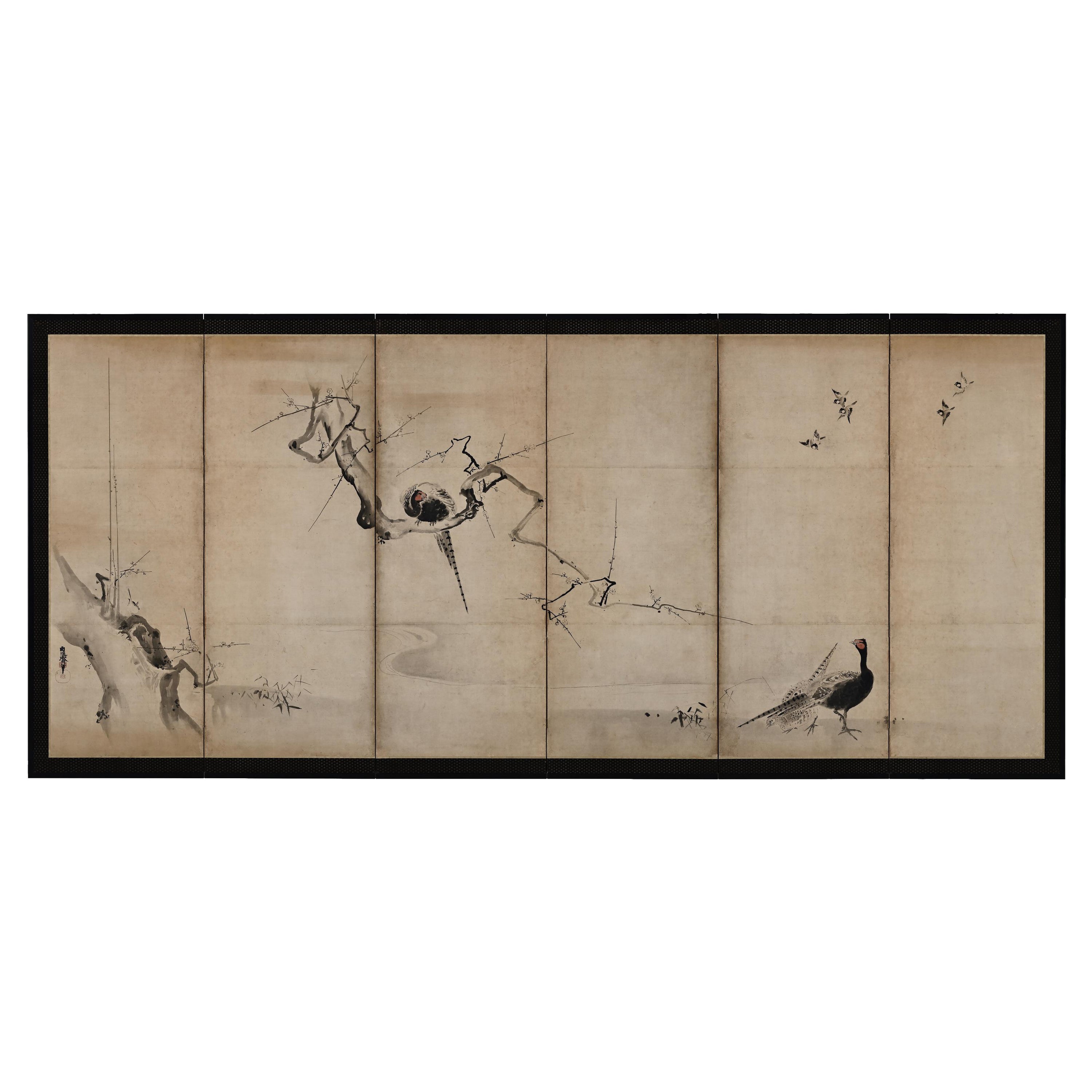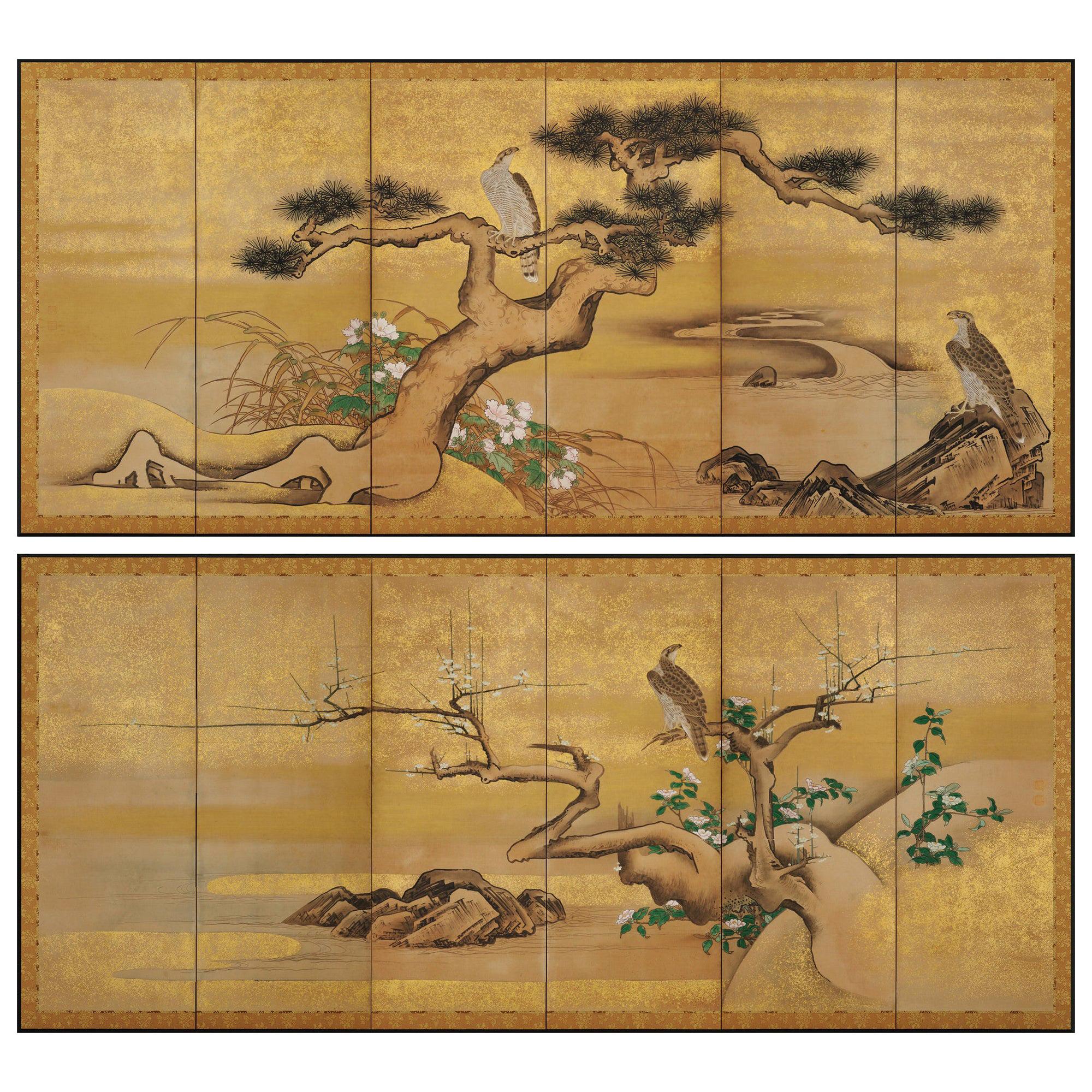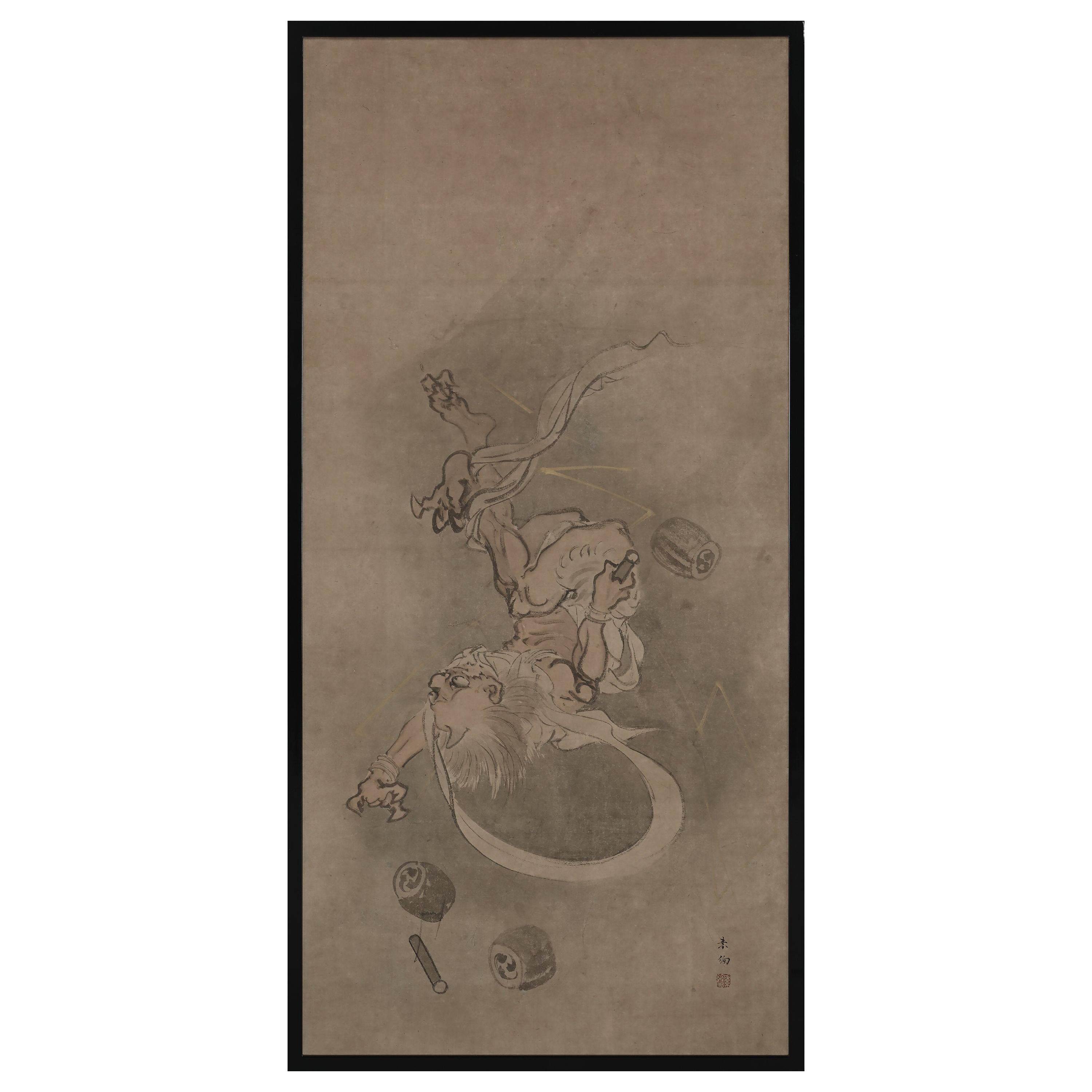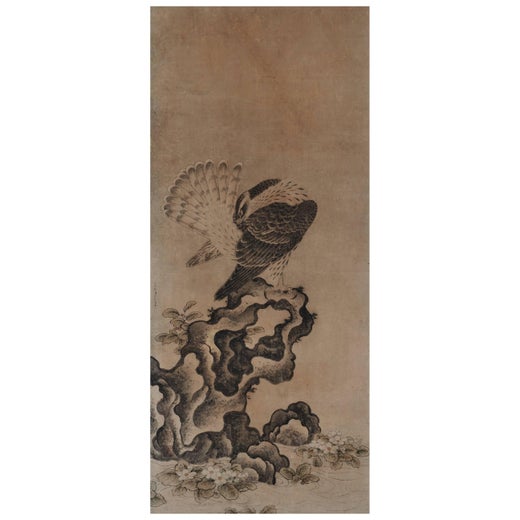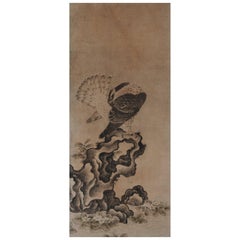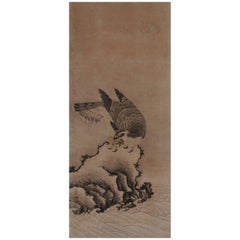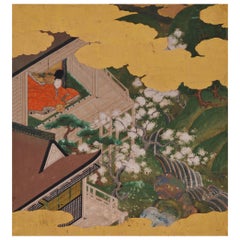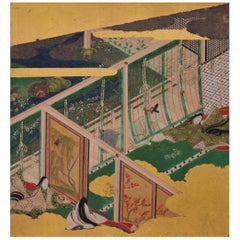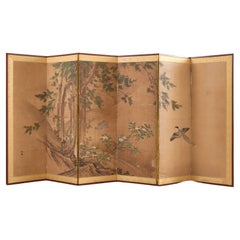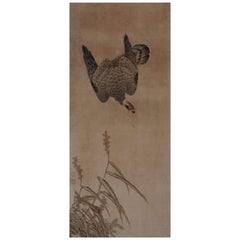
Japanese Painting, Framed Panel, 17th Century Falcon by Mitani Toshuku
View Similar Items
Japanese Painting, Framed Panel, 17th Century Falcon by Mitani Toshuku
About the Item
- Creator:Mitani Toshuku (Artist)
- Dimensions:Height: 46.5 in (118.11 cm)Width: 20 in (50.8 cm)Depth: 0.75 in (1.91 cm)
- Style:Edo (Of the Period)
- Materials and Techniques:
- Place of Origin:
- Period:Early 17th Century
- Date of Manufacture:circa 1630
- Condition:Refinished. Wear consistent with age and use. Recently restored and mounted.
- Seller Location:Kyoto, JP
- Reference Number:1stDibs: LU247239125361
Mitani Toshuku
Mitani Toshuku was an early artist of the Unkoku School. Founded by Unkoku Togan (1547–1618), a master of the Momoyama period, the Unkoku school enjoyed long-lasting patronage in southern Japan. Togan was a retainer of the Mori family in the present-day Yamaguchi prefecture. Members of the school considered themselves to be in the artistic lineage of Sesshu Toyo. Although he did not use the Unkoku name, Mitani Toshuku was a prominent member of the school. He painted in a manner very similar to his master, Togan, and specialized in painting falcons. Toshuku’s falcons were famous within the Mori domain and were given the name Mitani Falcons. These paintings embody the solemn and dignified atmosphere typical of the Unkoku school, particularly evident with early Unkoku painters. The primary medium of ink is enhanced with limited use of colors and go fun. The rocks and pine trees are modeled with chiaroscuro lending them dramatic three-dimensional forms. The feathers of the dark falcons are intricately detailed, contrasting sharply with the white falcons, which are presented in loosely outlined silhouettes. These paintings are comparable to a well-known set of twelve hawk paintings by Mitani Toshuku, which were first recorded in 1899 by the National Research Institute for Cultural Properties in Tokyo.
More From This Seller
View AllAntique Early 17th Century Japanese Edo Paintings and Screens
Wood, Paper
Antique Early 17th Century Japanese Edo Paintings and Screens
Paper
Antique Late 17th Century Japanese Edo Paintings and Screens
Gold Leaf
Antique Late 17th Century Japanese Edo Paintings and Screens
Gold Leaf
Antique Late 17th Century Japanese Edo Paintings and Screens
Gold Leaf
Antique Mid-17th Century Japanese Edo Paintings and Screens
Silk, Wood, Paper
You May Also Like
Antique Late 17th Century Japanese Edo Paintings and Screens
Silk, Wood, Paper
Antique Late 17th Century Japanese Edo Paintings and Screens
Gold Leaf
Antique 19th Century Japanese Edo Paintings and Screens
Silk, Wood, Paper
Antique 18th Century Japanese Edo Paintings and Screens
Gold Leaf
Antique Early 19th Century Japanese Edo Paintings and Screens
Silk, Paper
Antique 17th Century Chinese Qing Paintings and Screens
Silk, Glass, Giltwood, Paint
